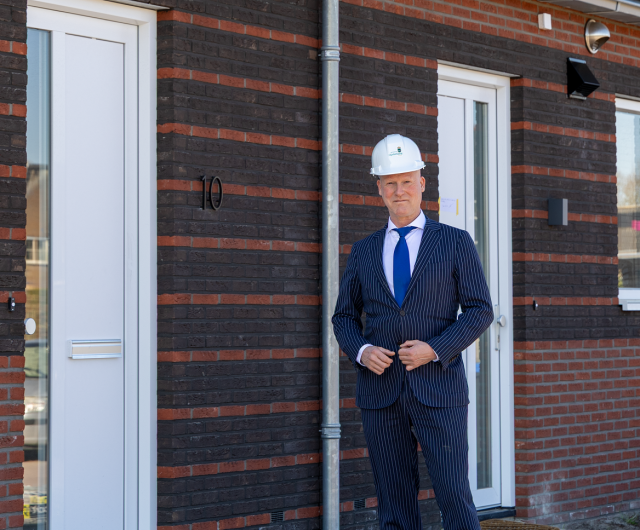Housing construction in Opsterland
We are a rural municipality with many qualities. These are reflected in our 16 villages. We want Opsterland to remain an attractive place to live in the future. That is why we follow important developments closely. Think of the shortage in the housing market and the importance of social cohesion in villages.
We build homes that fit residents' needs
We think it is important that there is enough good housing for everyone. That is why we work together with housing corporations and other market players. Until 2030 we will build at least 670 new homes. After that, approximately 330 homes will be added until 2035.
View current housing projects
Want to know what housing projects are out there now? Then view the list or use our interactive Map. Here you will find current information about the larger housing projects in Opsterland. You can find these further down this page.
Want to know more about zoning regulations?
You can view current plans and documents available for review through the Environment Desk: Rules on the Map - Omgevingswet
Stay informed with the Housing Update
Want to stay up to date on Opsterland's housing construction news? Then sign up for our Housing Construction Update. You will then receive the latest news in your mailbox several times a year. You can sign up using the button below.

"In the next ten years we will build a thousand new homes! And at the same time, Opsterland does remain our beautiful Opsterland."
What has been built so far?
In our Housing Vision (adopted August 18, 2023) it was agreed that we will build approximately 1,000 new homes in Opsterland between 2022 and 2034. This number is based on the expected growth in the number of households, with an additional margin for plans that are delayed or do not proceed.

A total of 227 new housing units were added in Opsterland between 2022 and 2024.
Of these,:
- 41 social housing units
- 87 affordable housing units (mid-rent)
The rest are owner-occupied homes.

Housing development on the Map
Residential portrait
We often hear that living in Opsterland is good. Of course, as a municipality, we like that and we want to keep it that way. But, as elsewhere in the country, the housing market is tight. Together with housing corporations and commercial construction companies, we as the city council want to ensure a housing supply that matches the market and is future-proof. Here we portray residents of Opsterland and ask them about their experiences living in our municipality.

